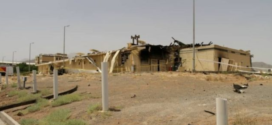
By: Daniel DePetris – 11th July 2020
· The Trump administration, with Secretary of State Mike Pompeo in the lead, is working hard to prevent the expiration of a UN arms embargo on Iran.
· Pompeo has painted a nightmarish picture of a world where Iran is able to buy conventional weapons, but the US perceptions have again overshadowed the reality of Iran as a mid-level power surrounded by countries that oppose its agenda, writes Defense Priorities fellow Daniel R. DePetris.
On October 18, less than four months from today, a UN Security Council provision prohibiting the export of arms and major defense systems to Iran including fighter jets, tanks, and missiles, will expire. The Trump administration is trying to prevent that expiration from happening.
During a June 30 UN Security Council teleconference, Secretary of State Mike Pompeo painted a nightmarish picture of what the world would look like if Iran was once again free to purchase conventional weapons like every other country — going so far as to suggest that Rome could be held hostage to Iranian firepower.
Pompeo’s comments, of course, are hyperbolic on their face. But the sentiment behind them is not necessarily new. Exaggerating Iran’s military power and hyping the threat Tehran poses to the US and its partners in Europe and the Middle East is as popular in the Beltway as networking and happy hours.
With respect to Iran, perception too frequently overtakes reality—an imbalance that leads to overstretched US military commitments (there are currently tens of thousands of US troops stationed in the Middle East), poor strategy, and even poorer foreign policy.
The perception is easy enough to spot because US officials consistently view Iran as a danger to the international order and a country whose leitmotif is violence, hostage taking, and human rights violations.
The conventional view of Iran is that of a rogue state inherently hostile to US interests, impervious to diplomatic overtures, and intent on turning the entire Persian Gulf into its own personal fiefdom. It’s an Iran whose leaders pride themselves on their zealotry and ideology and who are willing to shoot a US drone out of the sky, purportedly launch cruise missiles at Saudi Arabia’s largest oil refinery, and smuggle missile components to proxies in Iraq and Yemen.
The reality of Iranian power and behavior, however, is not nearly as terrifying as the pundits would have you believe.
Despite the anti-American railings and innuendo from the political leadership, Iran is at best a mid-level power sharing a region home to states that are skeptical, if not downright opposed, to Iranian objectives. At $454 billion, its economy is nearly half the size of Florida’s.
Due to US sanctions, the coronavirus epidemic, and the low price of crude oil, Iran’s GDP is projected by the International Monetary Fund to shrink by an additional 6% this year. The Iranian political class has proven itself to be so incompetent at governance and so detached from its constituents that it sat passively by as covid-19 ripped through the population.
While the Iranians may be talented and proficient in the art of subterfuge and proxy warfare, its conventional forces are unimpressive. The Iranian defense budget in 2019 was $12.6 billion. For comparison, Saudi Arabia and Israel — commonly considered to be Iran’s chief regional adversaries — spent a combined $82.4 billion, more than six times as much.
Although it’s certainly plausible that Tehran could seek to acquire advanced fighters and anti-missile defense systems from Russia and China after the Security Council arms embargo ends, the Iranians are in such a dire financial state — the budget deficit for 2020 is $44 billion — that Supreme Leader Ayatollah Ali Khamenei could very well question whether expensive imports are smart or fiscally sustainable.
It’s difficult to see Tehran coming up with the cash or putting its stock in Moscow, particularly when its acquisition of the Russian S-300 missile defense system took nearly a decade to complete.
If Tehran is becoming increasingly aggressive over the last year, this development is less a measure of Iran’s military strength than an indictment of Washington’s maximum pressure strategy, which aims to tie the economic noose around Iran’s neck so tightly that Khamenei agrees to US demands.
Those demands, as elucidated by Pompeo in May 2018, include the end of Iran’s enrichment of uranium, a complete shutdown of its nuclear and ballistic missile production and development, an end to its support for proxy forces in the region, a withdrawal of all Iranian troops from Syria, and Tehran’s proactive disarmament of Shia militias in Iraq.
Of course, two years after Pompeo’s speech, none of these unrealistic demands have been met. Iranian officials across the ideological spectrum consider them nonstarters for a reason: Agreeing to meet them will just encourage hardliners in Washington that an all-pressure, no-dialogue approach works.
The combination of the Trump administration’s pullout from the Iran nuclear deal and the imposition of a de-facto economic embargo on the Iranian economy has produced precisely what the US hoped to avoid — a chasm of differences between Washington and its partners in Europe; Iran churning out more enriched uranium by the month; a resurgence of hardline Iranian politicians at the expense of pragmatists who were once open to negotiating with the US; and a tit-for-tat cycle of escalation that could have erupted into a war last January if cooler heads didn’t prevail.
Iran is not a poster child of model behavior. But neither is Iran a hegemon planting its flag in regional capitals anytime soon.
If the US is concerned about what Tehran may do in the future, it can help ameliorate those worries by not overreacting, keeping Iran’s actual capability in perspective, and replacing a failed policy with one driven by realistic objectives.
 khalijefars News, Blogs, Art and Community
khalijefars News, Blogs, Art and Community








